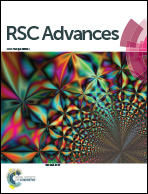Engineering the epoxide hydrolase from Agromyces mediolanus for enhanced enantioselectivity and activity in the kinetic resolution of racemic epichlorohydrin†
Abstract
The biocatalytic production of enantiopure epichlorohydrin (ECH) has been steadily attracting more attention. For industrial applications, it is important to obtain an epoxide hydrolase (EH) that possesses the desired enantioselectivity. Site-saturation and site-directed mutagenesis of the Ser207, Asn240 and Trp182 positions were used to generate variants of EH from Agromyces mediolanus ZJB120203 with enhanced enantioselectivity for the kinetic resolution of racemic ECH. The best variant, VDF (W182F/S207V/N240D), displayed a 7-fold enhanced enantioselectivity toward racemic ECH, with an increase in the enantiomeric ratio value (E value) preferring the (R)-ECH enantiomer from 12.9 of wild-type to 90.0, as well as a 1.7-fold improvement in activity. Furthermore, we successfully applied the created recombinant Escherichia coli whole cells expressing variant VDF in the kinetic resolution of racemic ECH. Enantiopure (S)-ECH could be obtained with an enantiopurity of >99% ee and a yield of 40.5% from 450 mM racemic ECH, which is better than those of other reported EHs. These results demonstrated that the EH obtained in this study could be applied for the efficient resolution of racemic ECH.


 Please wait while we load your content...
Please wait while we load your content...